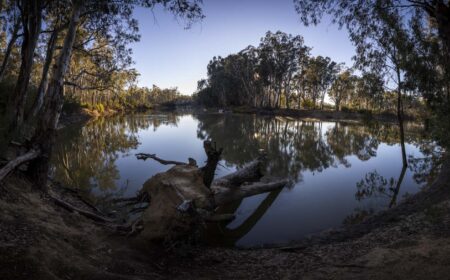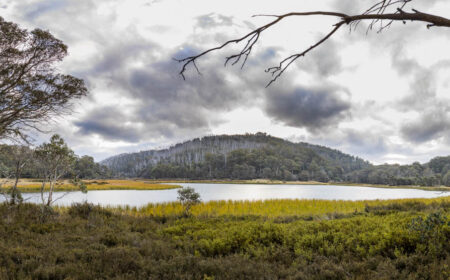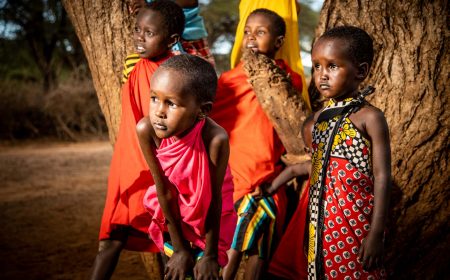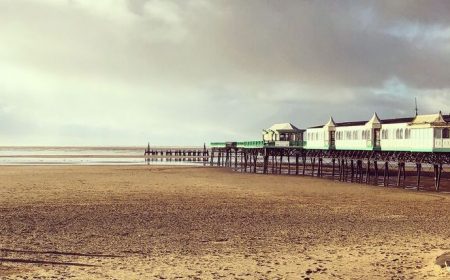We’re trudging through the countryside in Vinales, Cuba. It’s hot, the sun is beating down on us and yet somehow the open air, the expanse surrounding us, brings with it a cool breeze.
And the countryside is just so pretty, so green, that we lose ourselves in the walk ahead of us.
When the bus dropped us off where country meets town, on the outskirts of Vinales, we were immediately stopped by a bullock and cart blocking our way on the narrow dirt road.
We had moved to the side, waiting for it to pass, and of course, photographing this symbol of the countryside, of times gone by, of another era, as be passed by.

Our tour guide, who seems to double as a comedian, immediately put us at ease with his easy, relaxed manner and knowledge of the countryside. I’m here hosting a tour with the Australian solo travel company Two’s a Crowd. I’ve travelled through Mexico with most of my group, and we’ve just come from the very cool city of Havana.
But Vinales could be a world away from Havana.
It’s a sleepy little town in western Cuba, known for its farming and cigar making. And while tourism is strong in the city, you wouldn’t know it. The city has retained a sense of its traditional way of life. There are no large hotels here; instead colonial style timber homes all painted in bright colours line the narrow roads. It’s not uncommon to see horse and carts crawling through the city centre, interspersed between the big old-timer cars.
But right now, we’re learning about the traditional way of life for the locals. Our guide stops frequently to explain plants, the scenery, the farming practices.
When we look up we can see the craggy face of the Sierra de los Organos Mountains – limestone hills known as mogotes that rise up sharply from the Vinales Valley that we’re now walking through.
Our guide sees a young man coming towards us, someone he knows. He stops and chats, asks after his family, where he’s been. The young man, who our guide tells us is just 18, has joined the army and has been away from his family for three months. His family is a farming family, they live in this valley, he tells us.
We continue walking, delicately balancing on a flattened log serving as a bridge to cross the river. We stop to watch as a man directs two bullocks pulling a plough across his fields and then we come to a farmhouse.
Our guide introduces us to the owner who shows us how they make coffee. Meanwhile a woman in my tour group has realised her shoe is broken; the sole is coming off, meaning she’ll have to do the rest of the walk barefoot. But our guide mentions it to the farmer whose house we’re visiting. He knows someone nearby, a cobbler. We wait and within minutes the cobbler arrives. He takes Jan’s shoe off to be mended, promising to have it back in 20 minutes or so, long enough for the rest of the group to enjoy a cup of thick Cuban coffee.
When the shoe comes back, fixed perfectly, we move off again. This time on to a cigar farm. We pile into a shed made from bamboo sticks, perch ourselves on the surrounding benches and watch as our guide and the farm owner’s son talk us through the process of growing and drying tobacco. He explains the methods of rolling it into cigars, tells us that all the farms have different ingredients that they use, something that makes it unique to their farmhouse.
And when he has finished rolling, when there is a completed cigar in front of him, and all our questions have been answered, he asks who would like to taste a real Cuban cigar?
There is trepidation initially; no one wants to go first. But eventually all the group get involved, they make smoke flumes and circles. They pose for photos and take in the taste, the experience of trying a Cuban cigar, and then, of course, we all buy.
We leave the farmhouse edging ever closer to the mogotes. The ground here is flat, with just the odd undulation. We follow the path as it curves through the vegetation, and then we spy the timber open-air hut our guide has us moving toward.
Our guide asks us who feels like a mojito, this is still Cuba afterall. We laugh, thinking he’s joking, but say yes anyway, because well, it is Cuba and anything is possible, plus we’ve walking for hours this morning taking in the Vinales countryside and its farming practices.
But as we draw closer to the hut we realise he’s not joking that even here, in the middle of the Vinales Valley, with nothing but farmland and spiky drought-loving vegetation surrounding us, there is a bar.
We take our seats around the single large table. The hut has a roof to keep the sun off, but open sides so we can continue to admire the view. We are handed menus, but the guide tells us about the in-house specialty – basically a large mojito with a special ingredient so we pretty much all follow his recommendation.
The owner brings us our cocktails and leaves us the bottle of rum – to spike the drinks to our own tastes.
When we’re finished, and fully revived, we pay our $US2 and continue the long slow walk back into town. Slower now, as the rum kicks in under the Cuban sun.
Been to Cuba? What was your highlight?
Fast Facts
This was part of a tour to Cuba that I hosted with Two’s a Crowd.
We stayed in local Casas – local homestays.
We were here for two nights.
Was it long enough? It was a perfect amount of time to check out the city and the valley and to just chill out. My group loved this little part of Cuba.
Highlights: Learning to make and then trying the Cuban cigars – touristy, we know, but when in Cuba… taking in the green beauty of the valley, relaxing with a mojito and some Cuban music on a lazy afternoon.
Join AllAbroad on Facebook, Instagram and Twitter for more travel chatter.




















